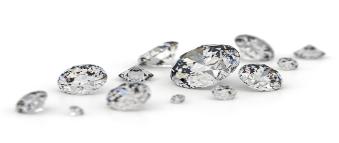Diamonds A diamonds' quality and value is based on the 4C's. The better combination of the 4C's, the more valuable the diamond will be. Our hand selected diamonds come in a range of prices. Please let us know if you are looking for a quality certified diamond and we can show you a diamond that is perfect for you . Larrys Email |
Balser
| Jewelry |
(940)692-0256 or (940)552-5931
| Cut The cut of a diamond is not only the shape of the diamond but also the proportion of how a diamond is cut. There are many shapes of diamonds such as the round, princess,heart, marquise, oval, pear, radiant, square, triangle, and emerald. The proportion of a diamond must be consistent for the diamond to accurately capture light and reflect light. |
| Color A diamond with the least amount of color will be the most valuable. There are exceptions like a fancy yellow diamond or the brilliant blue diamonds. The color scale for diamonds begins with D-F which is colorless, G-J which is near colorless, K-M which is faint yellow, and Z which is light yellow. The completely colorless diamonds are the most rare. |
| Clarity The clarity of a diamond is measured by the absence of flaws. A flaw can be a surface blemish or internal inclusion. Some flaws can not be detected by the human eye. You should always look at your diamond under a jewelers microscope to detect the true flaws. The clarity levels begin with FL&IF which represents flawless and internally flawless. VVS1 & VVS2 which is very very slight included and very difficult to see without a microscope. The next level is SI1 & SI2 these are slightly included and visible to the naked eye. The last level is I1,I2, & I3 these have inclusions and are visible to the naked eye. |
| Carat Weight This is the weight of a diamond. The weight can be referred to in points such as .25 ct or in halves like 1/4 ct. Some diamonds may weigh the same but look different in size because the proportions are different. Diamonds with a heaver carat weight are the most valuable. |
